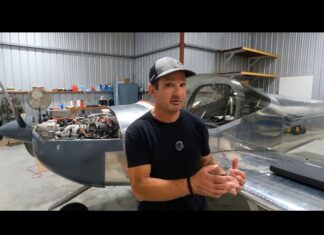How safe are those batteries, anyway?
I just read the True Blue Power TB-50 lithium-ion main starting battery article in the December 2024 issue of Aviation Consumer. Now this battery won’t be going in my Cessna 150 or Van’s RV-9A, but I think you should be much more specific about the battery chemistry in these articles.
Plain vanilla lithium-ion batteries (mainly used in consumer products like cellphones and e-bikes) have a very poor safety record for fires, and they are terrifying when they do occur. But of course there are many other lithium-based battery chemistries that are much safer. The True Blue battery website is not very specific about theirs, calling it NanoPhosphate Lithium-Ion technology. What little I know about the chemistries is that phosphate or iron-based lithium chemistries are very much safer (though nothing is 100 percent safe, I suppose). But for me, any battery that requires a small computer on board to monitor the health of the individual cells to prevent thermal runaways (fires) is not going in my airplane.
So even if lithium-based batteries have FAA STC approval for installation in an aircraft, it would be helpful to know the actual chemistries and safety systems incorporated in these batteries.
—Terry Edwards, via email
We asked True Blue Power for an explanation about the chemistry of the TB-50, shown upper right, and were told:
“We always welcome discussion and appreciate questions about safety. First and foremost, True Blue Power batteries are specifically designed for aviation and address safety on multiple levels. This includes the specific lithium chemistry, cell design, containment and the integration of sophisticated protection systems. The result is a lithium product line backed by more than 11 million flight hours with zero in-flight failures.
“Let’s talk chemistry in more detail. True Blue Power lithium batteries utilize a proprietary lithium iron phosphate chemistry. When compared to lithium metal oxide batteries—which are commonly found in consumer electronics, hover boards and cell phones—lithium iron phosphate batteries are significantly more stable and less reactive. For example, in the unlikely event of an internal short circuit or thermal runaway of one or more cells, the failure will not impact adjacent cells or propagate into a larger failure.
“Additionally, True Blue Power lithium batteries are tested to withstand a scenario in which all redundant levels of protection are disabled, and over-current/overcharge is applied. Even during a worst-case, all-cell thermal runaway, our batteries are designed and tested to deliver 100 percent containment and direct any emitted gases outside the aircraft, away from the passengers or crew. Even during such a possibility, the maximum temperature of the battery stays significantly cooler than lithium metal oxide batteries, preventing ignition of any surrounding gases or components in the aircraft.
“To better demonstrate the difference between battery chemistries and safety, we have developed an educational website, www.thelithiumexperts.com. It provides short, 5-minute videos about battery technology, operations, safety, and certifications. For additional questions or for more information about True Blue Power lithium products, please contact one of our Field Service Engineers at 316-630-0101 or email us at [email protected].”
Lube it there?
In the DIY Tire Swaps article (August 2024) you say “put some anti-seize compound on the slide pins and the threaded portions of the bolts.” In the Ask a Tech feature about Landing Gear upkeep (August 2024 issue) you say to “hit those pins with a shot of dry silicone lubricant” and “you want to use a dry lubricant so it doesn’t attract dirt like WD40 will.”
Anti-seize—lightly applied on bolt threads—is great. But I question its use on brake slides because it serves as a great attraction for dirt.
I greatly enjoy every issue of Aviation Consumer and rarely do I skip an article—read ‘em all.
—Jan J. Skibinski, A&P, via email
That’s a good point—thanks for the pro tip and your encouraging words, Jan.


